If you’re short on time, it can be tempting to skip the pre-workout stretches and jump right into your routine, but there’s actually a lot of value in taking just 5 to 10 minutes to do a proper warm-up.
The stretches that are best for your pre-workout prep, though, probably aren’t exactly what you’d equate with “stretching.” That’s because the best pre-workout stretches are going to be dynamic stretches—wherein you’re moving throughout—not static stretches, i.e., get into a pose and hold it.
These dynamic moves are better for your warm-up than static stretching, which works best for your cool-down after your workout. The National Strength and Conditioning Association recommends dynamic stretches prior to any physical activity because it takes muscles through a wider range of motion and warms up the body more than static stretching. Plus, doing static stretches before a workout may even reduce your strength, power, and explosiveness for the coming routine, as SELF reported previously.
Warm-ups are crucial no matter what your workout might be, Marcia Denis, P.T., DPT, a Miami-based physical therapist, certified yoga teacher, and cohost of the Disabled Girls Who Lift podcast, tells SELF.
“Whether you’re a runner or a strength athlete, warm-ups are super important,” she says. “They are great for priming your body for movement, and they also give you an opportunity to check in mentally and physically.” That can help prevent injury, she adds, since getting in tune with any preexisting aches and pains can inform the workout you’ll do next. For example, if your shoulder is cranky from sleeping wrong, you may want to add some additional gentle pre-workout stretches to that area to increase your mobility before getting started—or rethink a workout with tons of shoulder exercises and try a full-body routine instead.
In this pre-workout stretching routine Dr. Denis created, you’ll be easing into movement to prep you for whatever fitness adventures you have planned. These moves focus on full-body movement that stretches your spine, core, glutes, hamstrings, hip flexors, back, and shoulders. Warm-ups are designed to be easy rather than strenuous, she adds—if you start feeling your heart rate increasing quickly or yourself getting breathless or sweaty, dial back the intensity.
“Warm-ups shouldn’t be stressful or wear your muscles out,” she says. “They should be easy and specific to your main movement required for your workout, and what your body needs to achieve that movement.”
With that in mind, do these full-body, pre-workout stretches at a comfortable pace—it’s perfectly fine if you need to modify them so your body can feel smooth and fluid, not overstressed. Dr. Denis offers some simple modifications to help make them your own.
Ready to get started? Here’s what you need for a quick, 5- to 10-minute pre-workout warm-up session.
The Workout
What you need: A yoga mat for comfort. You can also have yoga blocks or cushions on hand for comfort modifications as well.
Exercises
- Child’s pose
- Cat-cow
- Donkey kick
- Bird-dog crunch
- Down Dog to runner’s lunge
Directions
- Perform each move for the set amount of reps, going right into the next in circuit form. For a five-minute warm-up, do this circuit once, making sure to move slowly and with control. If you have more time, complete two or three rounds total.
Demoing the moves below are Jessica Rihal (GIF 1), a plus-size yoga instructor (200-HR) and a strong advocate of fitness/wellness for all bodies; Shauna Harrison (GIFs 2 and 5), a Bay Area–based trainer, yogi, public health academic, advocate, and columnist for SELF; Krystal Salvent (GIF 3), NASM-certified personal trainer in New York City; and Kira Stokes (GIF 4), celebrity trainer, group fitness instructor, and creator of the Kira Stokes Fit app.
-
Pinterest
Meiko Arquillos1 Child’s Pose
- Get into a kneeling position on your mat with your knees hip-distance apart and feet together behind you.
- Take a deep inhale, and on the exhale, lay your torso over your thighs, pressing your butt onto your heels and reaching your arms forward.
- Think about lengthening your neck and spine by drawing your ribs away from your tailbone and the crown of your head away from your shoulders.
- Rest your forehead on the mat.
- Hold for three full breaths.
This move helps open up your back and shoulders. Make it dynamic by easing into and out of the stretch. Don’t worry if your glutes don’t reach your heels—play around with some blankets or cushions to take up that space, says Dr. Denis. You can also use them for extra cushioning if your knees hurt in this position.
-
Pinterest
Kelsey McClellan2 Cat-Cow
- Start in a tabletop position with your shoulders stacked directly over your wrists and hips over your knees.
- Slowly inhale, and on the exhale, round your spine, dropping your head toward the floor and lifting your belly button toward the ceiling. This is cat pose.
- On the next inhale, lift your head, chest, and tailbone toward the ceiling, arching your lower back. This is cow pose.
- Perform three slow and controlled reps.
Cat and cow poses, and the transitions between them, bring awareness to each segment of your spine, and also help warm up the muscles in your back and shoulders. If this hurts your wrists, you can do this move on your elbows or place your hands on a yoga block instead, says Dr. Denis. And if you’re struggling to breathe throughout the move, match the movement to your breath by adjusting your speed.
-
Pinterest
Tory Rust3 Donkey Kick
- Start in an all-fours position with your knees under your hips, wrists under your shoulders, and your core engaged.
- Keeping your knee bent and right foot flexed, kick your right leg up toward the ceiling. Pause at the top. If you feel this in your lower back, make sure you are keeping your spine neutral, avoiding any arching.
- Return your right knee to the floor for one rep.
- Perform five slow and controlled reps on one leg. Repeat on the other side.
Donkey kicks warm up your glutes, shoulders, and core. Make sure to keep the movements controlled rather than use momentum. If your hips twist or lean to one side, try this with one hip next to a wall so the hip stays more anchored, says Dr. Denis.
-
Pinterest
Katie Thompson4 Bird-Dog Crunch
- Start on your hands and knees in tabletop position with your wrists stacked under your shoulders and your knees stacked under your hips.
- Extend your left arm forward and right leg back, maintaining a flat back and keeping your hips in line with the floor. Think about driving your foot toward the wall behind you.
- Squeeze your abs and draw your left elbow and right knee in to meet near the center of your body.
- Reverse the movement and extend your arm and leg back out. Keep your right foot flexed throughout the exercise. This is one rep.
- Complete three slow and controlled reps on each side with an optional five-second hold with each arm and leg extension.
Whatever your workout activity, core stabilization is key, and this move will help kick off that stabilization process. If you’re having trouble keeping your balance, keep the toes of the working leg on the ground and straighten your leg by sliding it out and back, says Dr. Denis.
-
Pinterest
Kelsey McClellan5 Down Dog to Runner’s Lunge
- Start on your hands and knees, with your hands stacked under your shoulders and knees under your hips.
- Spread your hands wide and press your index finger and thumb into the floor.
- Lift your tailbone and press your butt up and back, drawing your hips toward the ceiling. Straighten your legs as best as you can and press your heels gently toward the floor. Your head should be between your arms, facing your knees, and your back should be flat.
- Pause, then shift your weight forward into a plank as you step your right foot outside your right hand.
- Raise your torso to assume a low lunge position. Squeeze your glutes to increase the stretch in your back leg’s hip. This is one rep.
- Do three slow and controlled reps, then switch sides.
Transitioning between these two moves will help open up your hips and back—this is another stretch during which it helps to focus on control in your movements. If you have tight ankles or hamstrings, you can bend both knees in your Down Dog. It’s totally okay if your heels don’t reach the ground, says Dr. Denis. And if you have trouble bringing your foot forward, break the transition into two steps by dropping to your knees and then moving into the lunge.



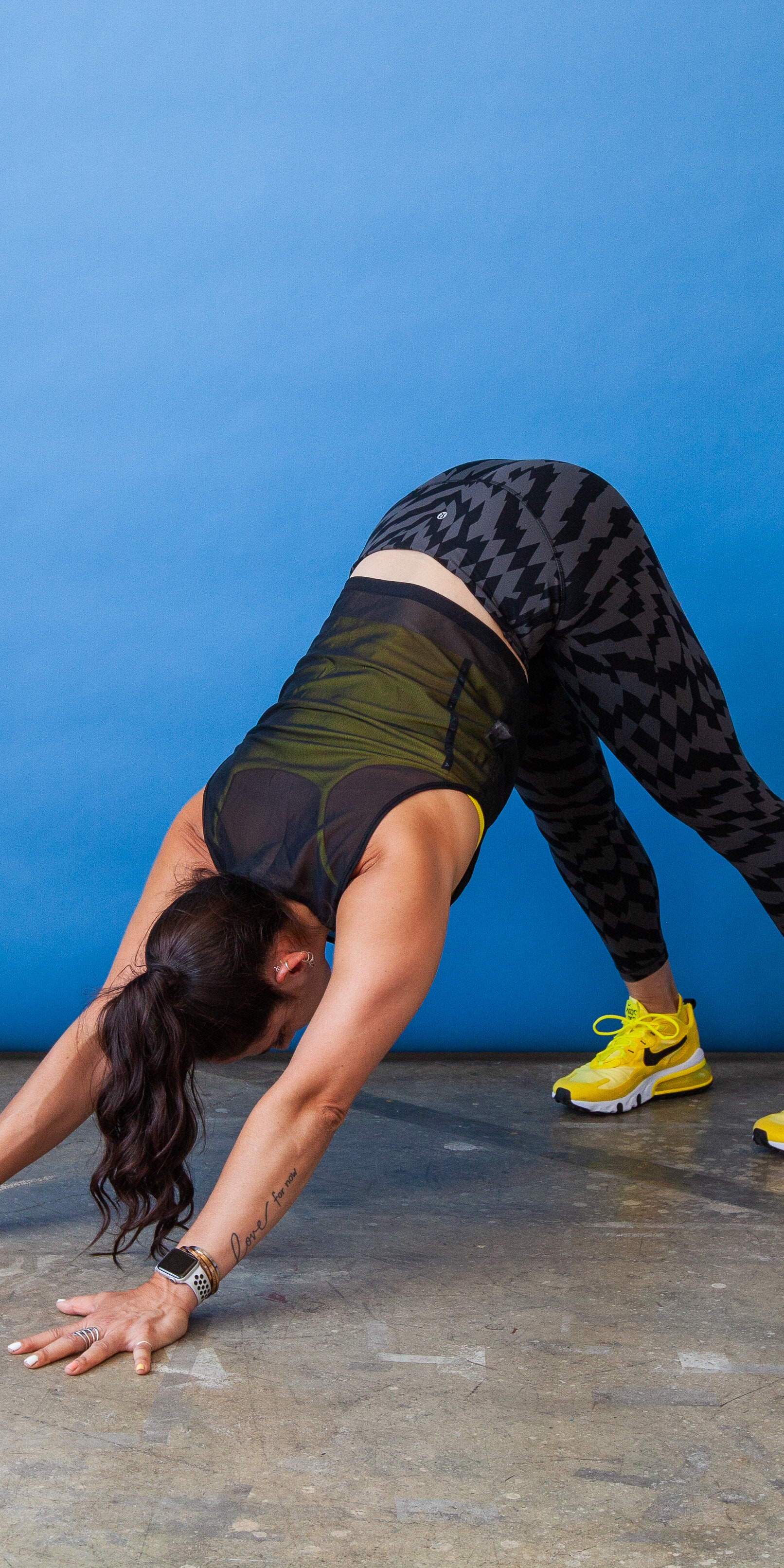
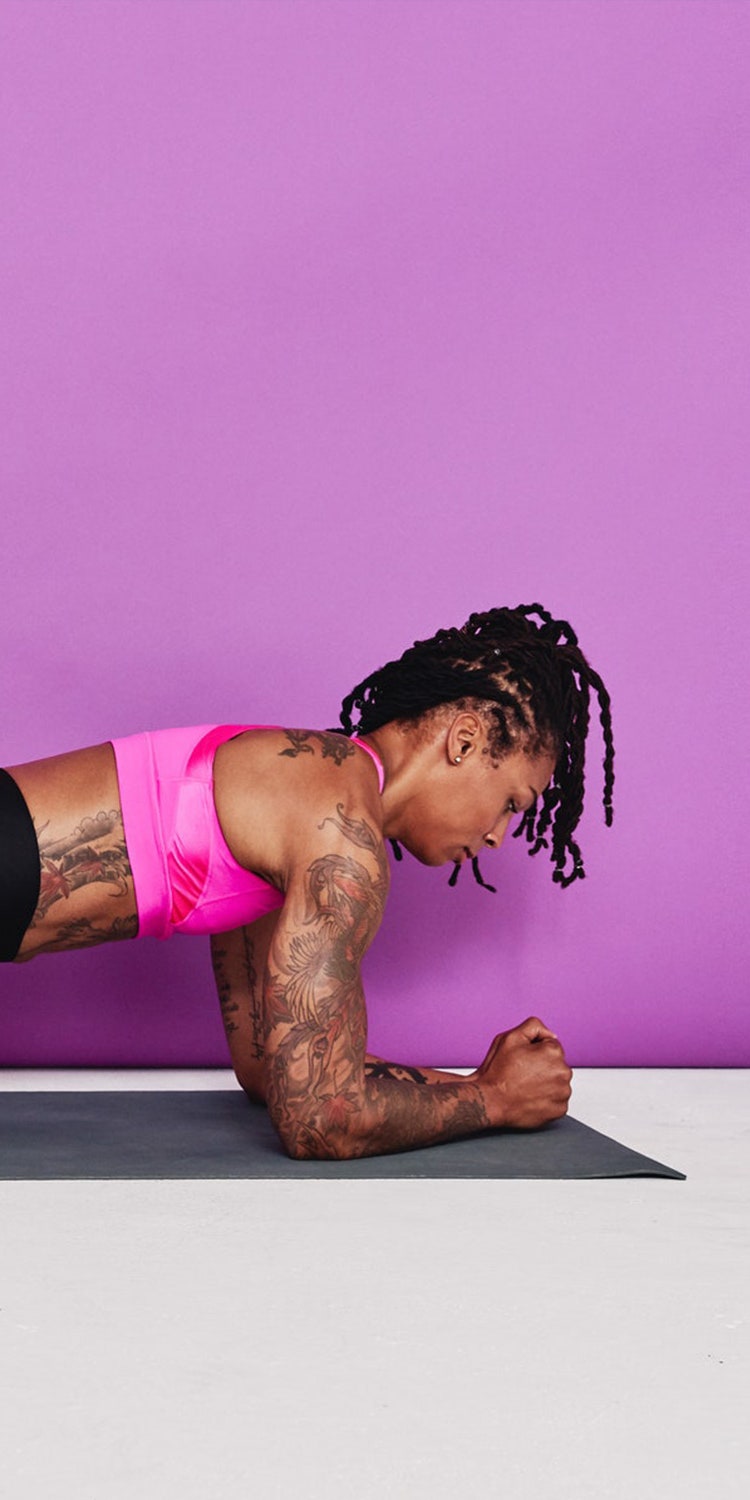
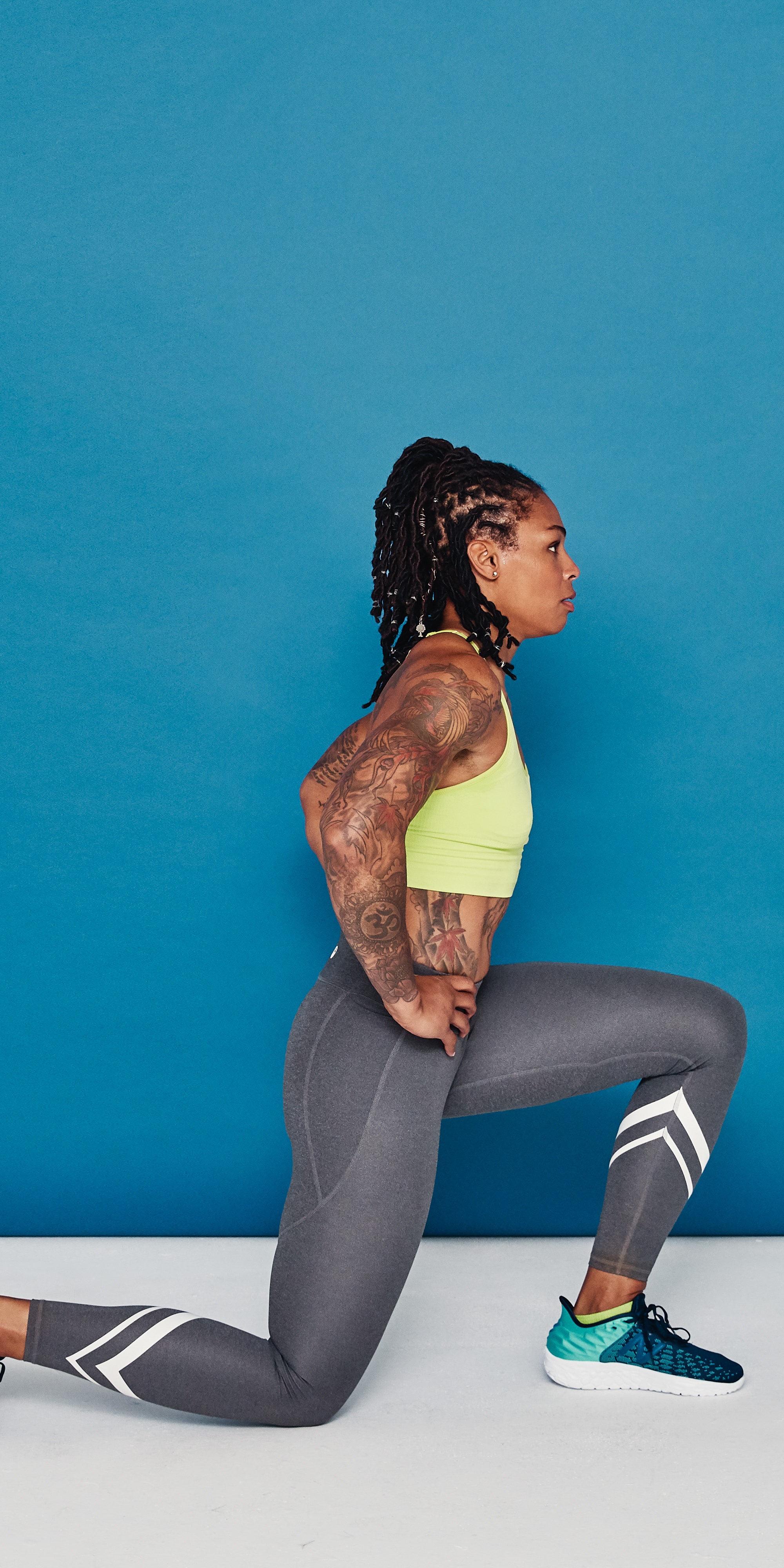
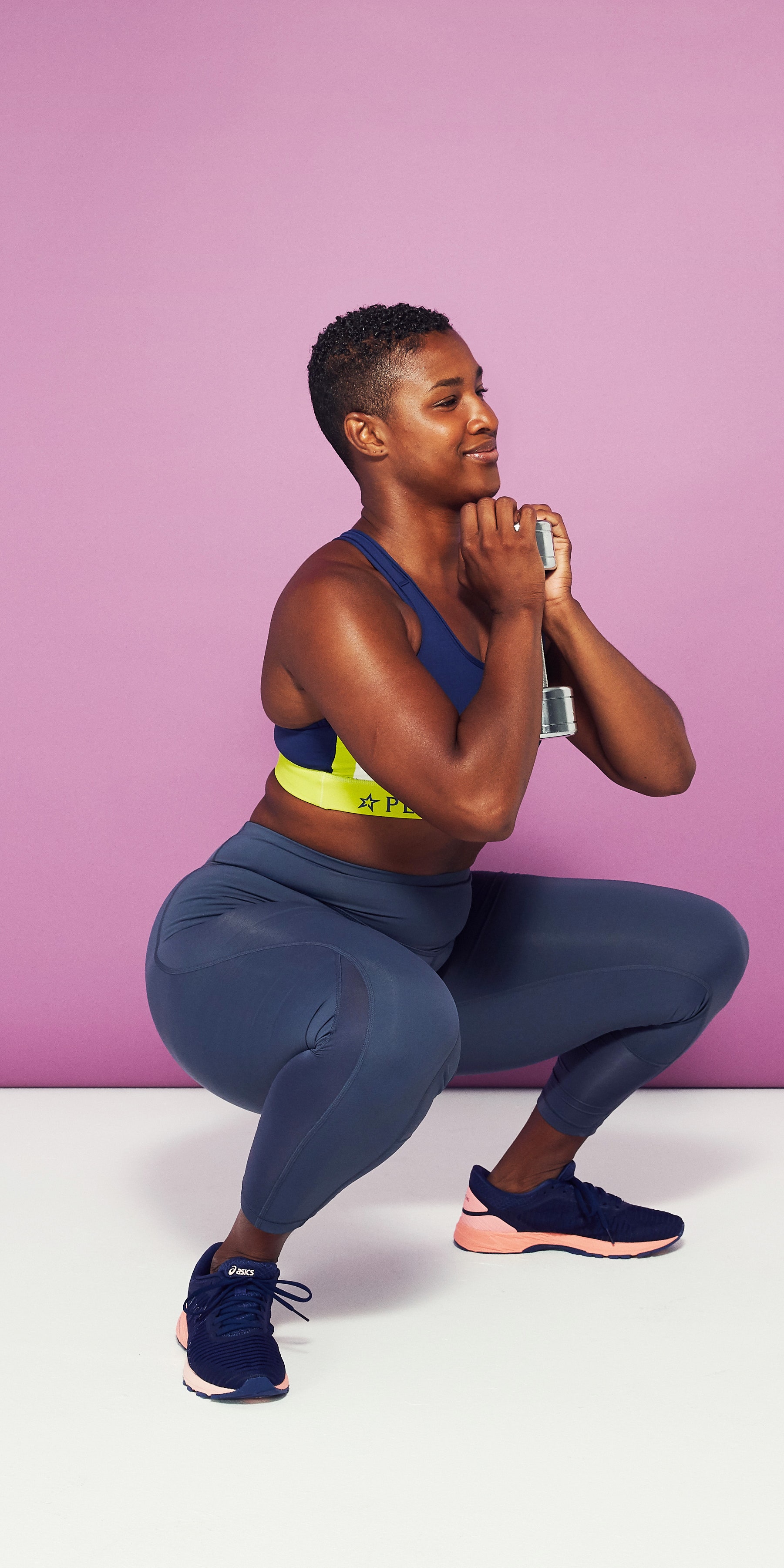
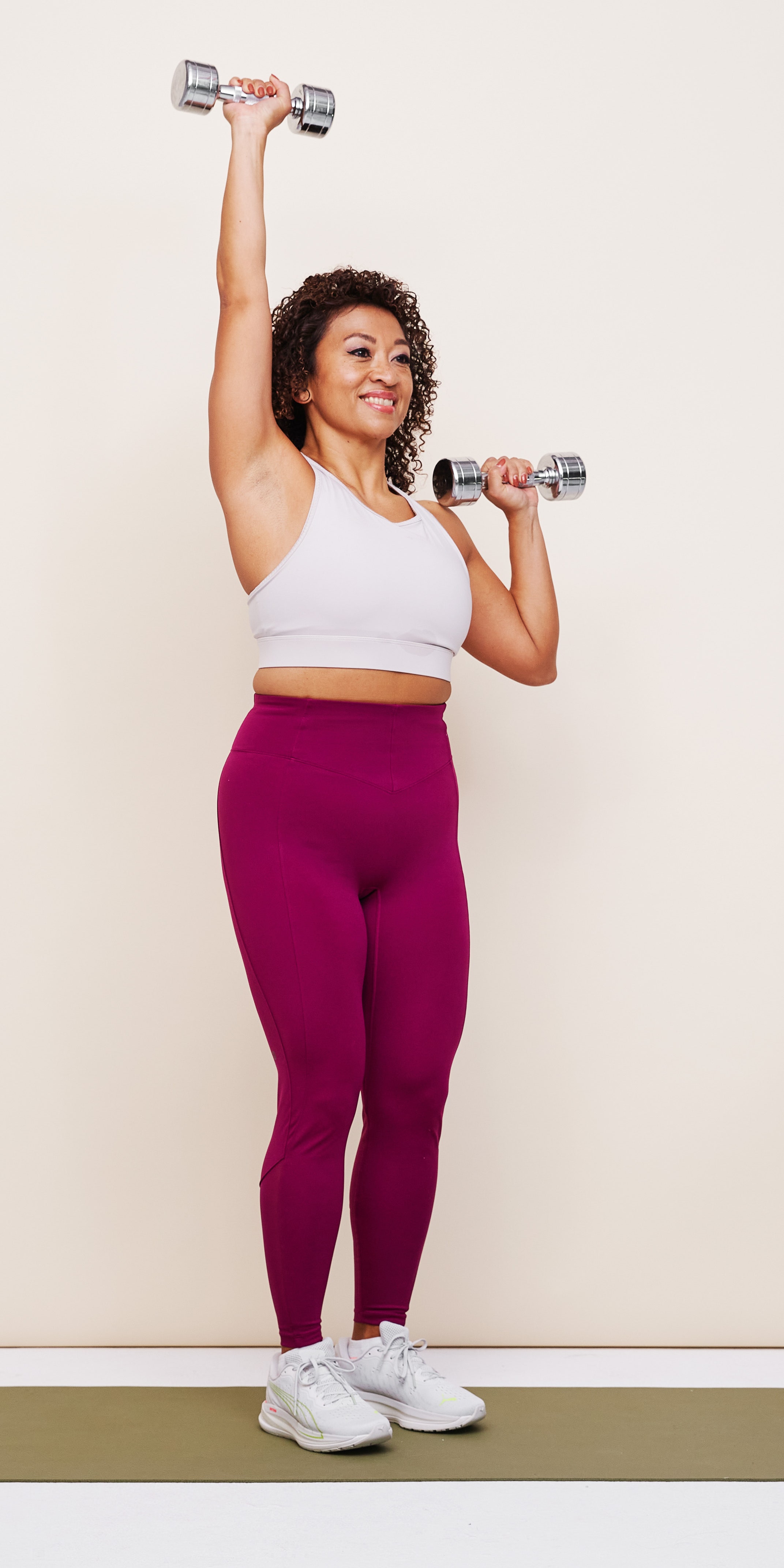
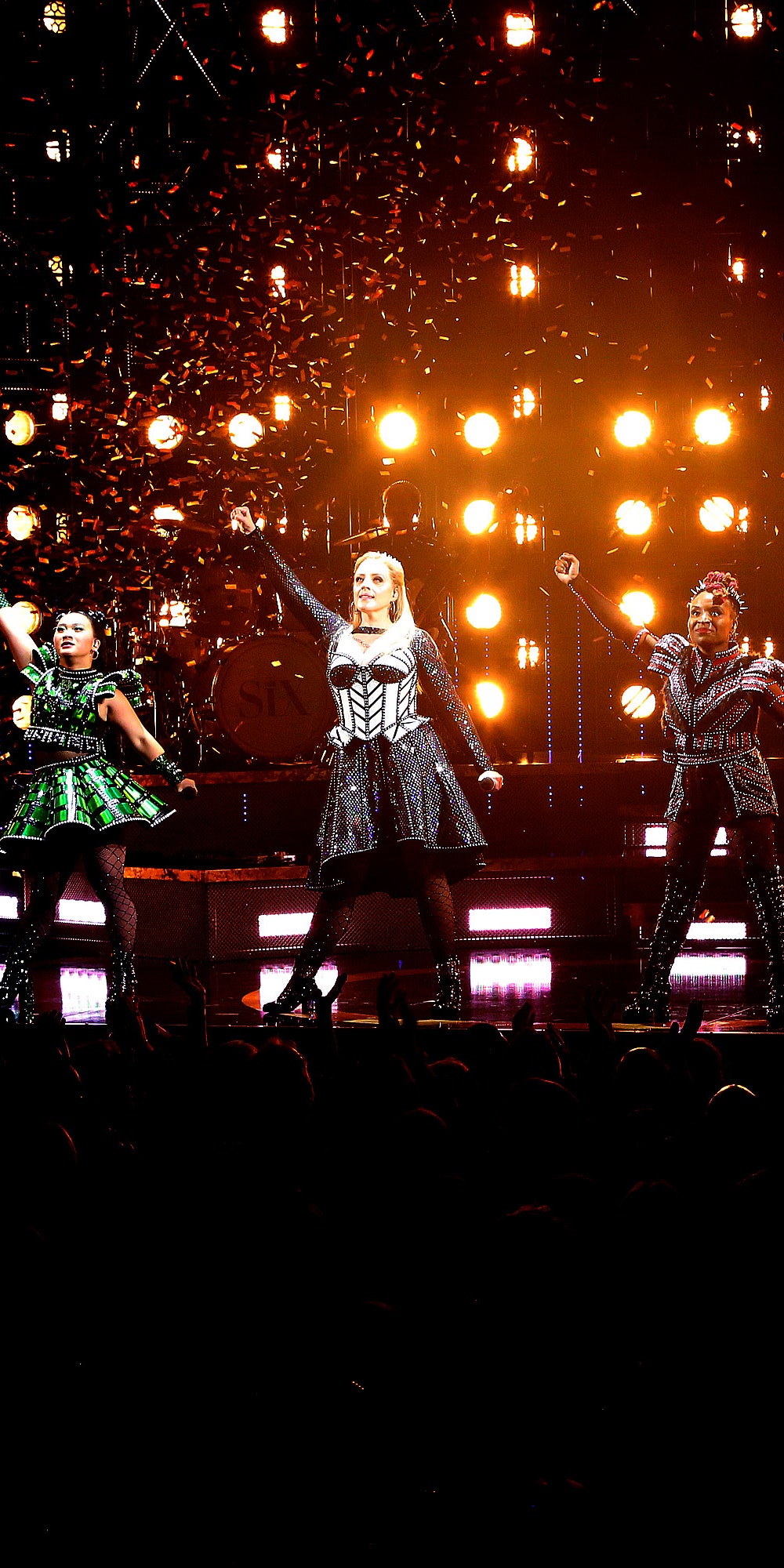
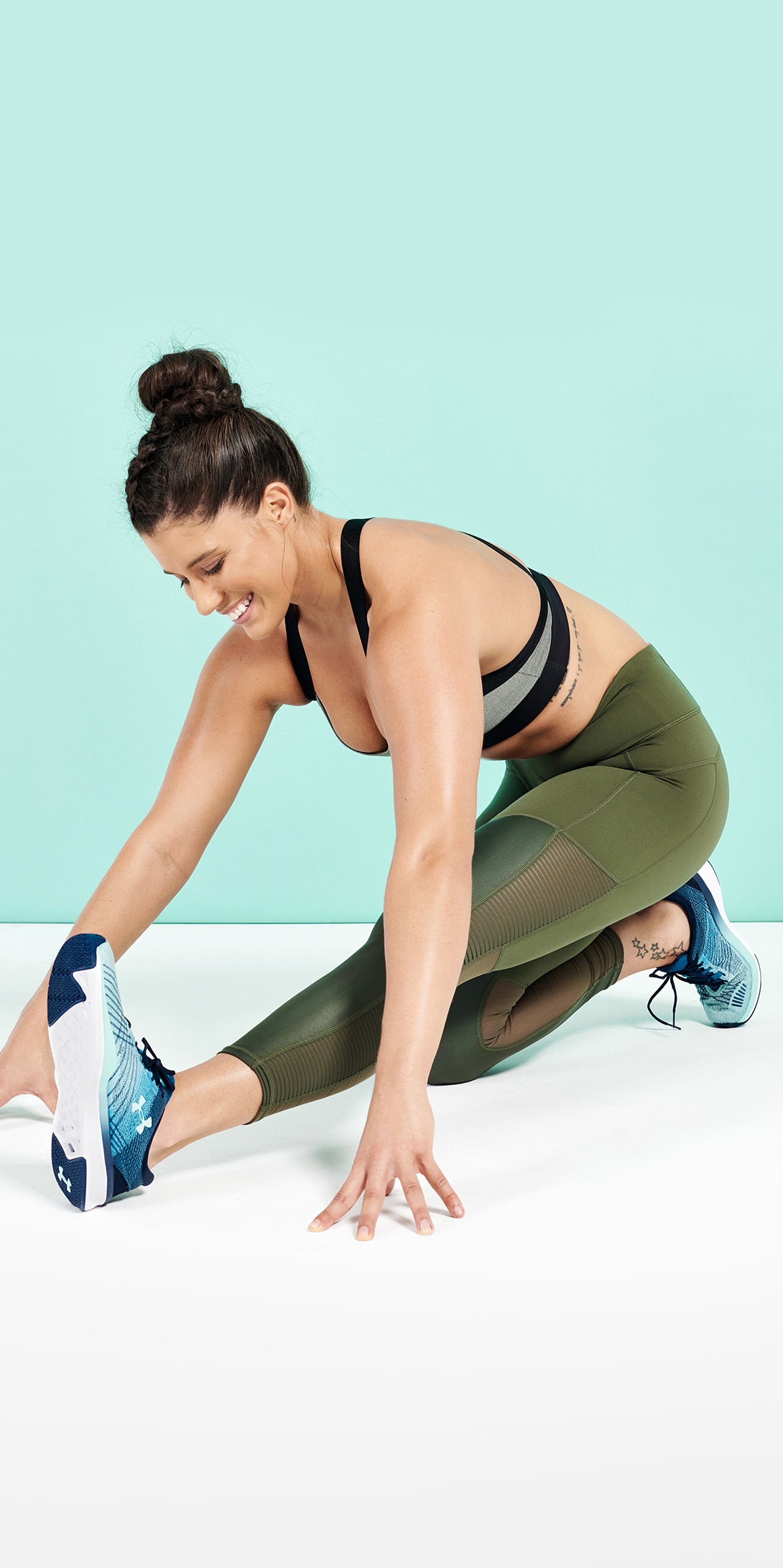
Leave feedback about this